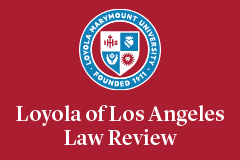Abstract
In the wake of the California Legislature’s elimination of the natural and probable consequences theory of second-degree murder, a new doctrine has emerged for assigning murder liability to accomplices in fatal assaults: implied malice aiding and abetting. This theory, which preserves murder liability for assailants who neither kill nor intend to kill, combines the doctrines of aiding and abetting and implied malice. The difficulty of navigating the resulting thicket of interlocking requirements raises a serious risk that the doctrine will be applied too broadly. After outlining the history of accomplice liability for murder in California and analyzing several cases where implied malice aiding and abetting has already been employed to sustain murder liability, this Note attempts to identify the potential pitfalls that face courts and legal practitioners in the application of this complex new theory.
Recommended Citation
Jason Mayland,
Implied Malice Aiding and Abetting: A Doctrinal Maze,
57 Loy. L.A. L. Rev. 251
(2024).
Available at: https://digitalcommons.lmu.edu/llr/vol57/iss1/7


